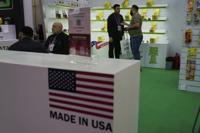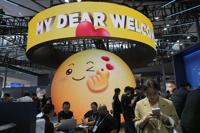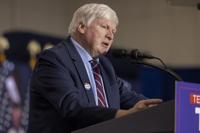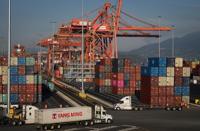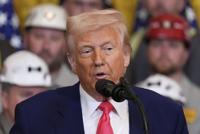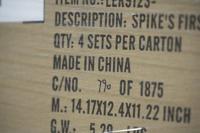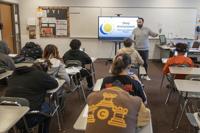BANGKOK (AP) — China's economy expanded at a 5.4% annual pace in January-March, supported by strong exports ahead of U.S. President Donald Trump’s rapid increases in tariffs on Chinese exports, the government said Wednesday.
Analysts are forecasting that the world’s second largest economy will slow significantly in coming months, however, as tariffs as high as 145% on U.S. imports from China take effect.
Exports were a strong factor in China’s ability to attain a 5% annual growth rate in 2024 and the official target for this year remains at about 5%.
Beijing has hit back at the U.S. with 125% tariffs on American exports, while also stressing its determination to keep its own markets open to trade and investment.
In the near term, the tariffs will put pressure on China's economy, but they won't derail long-run growth, Sheng Laiyun, a spokesperson for the ��ɫtv Bureau of Statistics, told reporters.
“China’s economic foundation is stable, resilient and has great potential. We have the confidence, ability and confidence to cope with external challenges and achieve our established development goals,” Sheng said.
In quarterly terms the economy grew 1.2% in January-March, slowing from 1.6% in the last quarter of 2024.
surged more than 12% from a year earlier in March and nearly 6% in U.S. dollar terms in the , as companies rushed to beat Trump’s tariffs. That has supported robust manufacturing activity in the past several months.
“Much of this was front-loaded — fueled by a burst of preemptive activity ahead of U.S. tariff escalations and an inventory binge stateside as importers scrambled to get ahead of the curve,” Stephen Innes of SPI Asset Management said in a commentary.
Industrial production rose 6.5% from a year earlier in the last quarter, led by a nearly 11% increase in output of equipment manufacturing.
The strongest growth was in advanced technologies, such as production of battery electric and hybrid vehicles, which jumped 45.4% year-on-year. Output of 3D printers soared almost 45% and of industrial robots surged 26%.
But despite relatively fast growth by global standards, the Chinese economy has struggled to regain momentum since the COVID-19 pandemic, partly due to a downturn in the property market resulting from a crackdown on excess borrowing by developers.
Consumer prices fell 0.1% in the first quarter, suggesting that demand is not keeping up with supply for many industries. Investment in real estate also remained weak, falling nearly 10% from a year earlier despite government efforts to spur more lending for housing purchases.
The tariffs crisis looms as another massive blow at a time when Beijing is striving to get businesses to invest and hire more workers and to persuade to spend more.
Those efforts appear to be bearing fruit. Retail sales rose 4.2% from a year earlier
Both private and public sector economists have remained cautious about what to expect, given how Trump has his stance on the details of his trade war.
“Given the events over the past two weeks, it is extremely difficult to predict how the U.S. and China tariffs on each other might evolve,” Tao Wang and other UBS economists said in a report.
The International Monetary Fund and Asian Development Bank have stuck with more optimistic forecasts of about 4.6% growth this year.
After taking office, Trump first ordered a 10% increase in tariffs on imports from China. He later raised that to 20%. Now, China is facing 145% tariffs on most of its exports to the United States.
UBS estimates that the tariffs, if they remain roughly as they are, could cause China’s exports to the United States to fall by two-thirds in coming months and that its global exports could fall by 10% in dollar value. It cut its forecast for economic growth this year to 3.4% from an earlier 4%. It expects growth to slow to 3% in 2026.
China has to spur more consumer spending and private sector investment over the past seven months, doubling down on subsidies for auto and appliance trade-ins and channeling more funding for housing and other cash strapped industries.
___
AP researchers Yu Bing and Shihuan Chen contributed.


